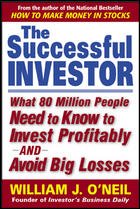Gold gold goldGold surged to 28-year high to close at US$831.0. The slumping dollar coupled with renewed credit concern triggered by the US sub-prime crisis prompted investors to bid-up the price of gold. Last September, I wrote about the possibility of gold hitting US$1,000.0, please read:
Gold at US$1,000On a contrary view, I think it is prudent to take some money off the table. I guess, there is too much bullishness right now on gold. Everyone is talking about it. On a risk/reward basis, the trek to US$1,000 represents a 20% upside from current levels. To my mind, the big gains may have already been made.
Peso peso pesoPeso closed at 7-year high to reach P43.22 to US$1.0. The break below P44.0 confirmed the long-term uptrend of the the Peso. Most likely, we will see the Peso at P40.0 to US$1.0 by year-end.
The situation right now is an interesting turnaround of the Asian currency crisis that happened 10 years ago. Investors are now shifting out of US assets and moving into other better yielding currencies. Note, that the Asian currency crisis triggered the longest bull-run in US equities market that saw the Dow Jones rose from 3,000 to 11,500 in a span of 4 years. During that period, investors shifted their money out of emerging markets and poured money into the US market.
Analysts are arguing that the "dollar crisis" will have the same effect on emerging markets. My only concern is that the world cannot be immune from the slowing US economy. Unless, we see a clear decoupling, emerging markets will continue to be baffled by the weak US markets.
However, what is obvious is that emerging markets have outperformed the US market since July. Exchange rates are leading indicator for the markets. Funds will most likely invest in markets with an appreciating currency. Since 2002, the US dollar has fallen by 50% against major global currencies. On the other hand, the Peso has appreciated by 23% during the said period. Thus, on a relative basis, the Peso still has a lot of room to appreciate. This might be the catalyst for the Philippine market.
PSE at P1,305Shares of local stock exchange operator, Philippine Stock Exchange, Inc. (PSE) rose to as much as P1,400 before settling at its current price of P1,305.0. PSE turned out to be my best pick (so far) for 2007. The good thing about PSE breaking above P1,000 is that member-brokers are now more willing to sell their stake. Note that the Securities and Exchange Commission (SEC) has mandated that member-brokers should hold no more than 20% stake in the exchange.
A PSE that is majority owned by institutional investors will generate better shareholder value in the long-run. It is quite ironic that an entity that regulates listed companies cannot even get its own stock dividend approved. Hopefully, with better shareholder mix, PSE can move towards professionalizing how it manages the business and at the same time maximize shareholder return.
For one, I cannot imagine why PSE should be sitting on close to P2.0bn cash that generates a measly 5% return whilst the PSEi is hitting new highs. PSE should come up with a dividend policy that pays out quarterly cash dividends to its shareholders. The exchange does not need to have excess cash in its book considering that it generates close to P150m cashflows per quarter. To my mind, the annual dividend pay-out should be P32.0 and not P8.86 per share.
Please read my past articles on PSE:
Hidden Gems Hidden Gems II PSE at P850.0 Current read: Asian Godfathers - Money and Power in Hong Kong and South-east Asia.
Asian Godfather is an interesting narration on how few "godfathers" control the economies of Hong Kong and Southeast Asia. The book, by Joe Studwell, compares these "godfathers" to the mafia overlords in New York who's business competencies are acquired through "concessions" and "wheeling-dealing" rather than innovating.
The book also gives a historical insight on how the "godfather" class emerged during the colonial times and how it continues to maintain its position.
Amongst the Philippine tycoons mentioned in the book are Henry Sy., John Gokongwei, Lucio Tan and Jaime Zobel de Ayala.
For reference,please read the commentary by William Pesek; Strictly Business: Godfathers in South East Asia. Please read:
Godfathers in AsiaFor comments, you can send me an email at jack.galt888@gmail.com
